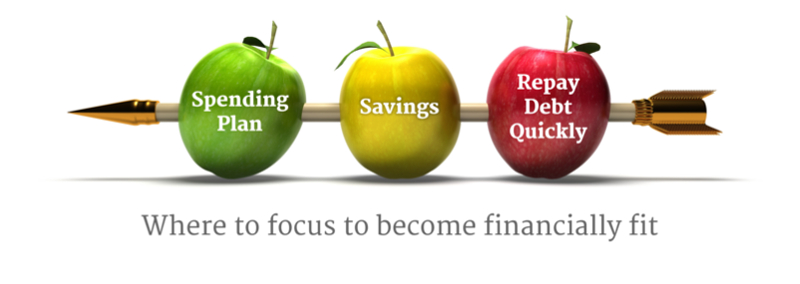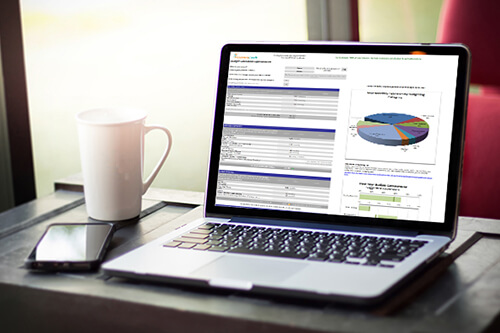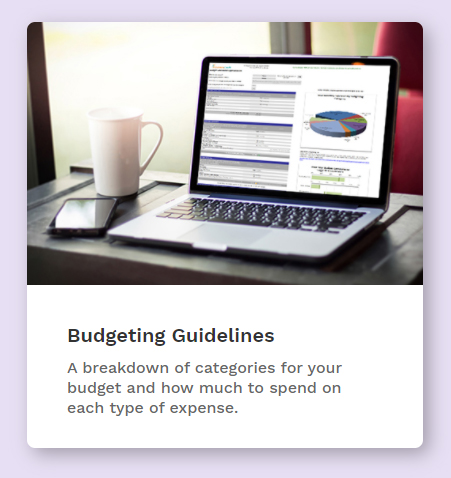How to Turn New Year’s Resolutions into Results
Q: My friends and I all make resolutions on January 1st but most of us don’t end up sticking to them. I’ve made the resolution to get my finances in order but I’m afraid that I’ll end up like most people at this time of year, hoping for the best but not doing anything about it. How do I turn my resolutions into results?
A: You’re absolutely right! Most people make resolutions on New Year’s Day but by the middle of January, those resolutions have just become distant dreams.
Turn Your Resolutions into Goals
Resolutions are easy to break so change your language – instead of calling them New Year’s resolutions, refer to them as goals. Goals imply progress, steps, measurable achievements, setbacks and successes.
Specify Your Goals
Now, clarify what exactly you want to achieve. Be specific about what getting your finances in order looks like for you. You can think of this as your level of financial fitness. You’re not going to get into top notch shape over night. It’s going to take some time, but be specific about what you want to accomplish this year. This could be paying off your debts (or specific debts if you have a lot), putting 10% of your paycheque into a TFSA or RRSP or creating one month’s worth of income as savings for emergencies.
Align Your Goals with Your Values
It’s important before you get into the how of it, to be focused on why this goal is important to you. If your goals line up with your values, you will be much more likely to achieve them. Think about how you would finish this sentence: “Becoming financially fit (or getting my finances in order) by the end of the year is important to me because….”
Where to Focus to Get Results
Now that you know what your goals are, the 3 most important areas to focus on to become financially fit are:
1. Create a spending plan & track your spending
It’s important to track your daily expenses for a few weeks to see exactly where your money is going. Once you know where your money is going you can make some smart decisions to keep yourself on track. Working these smart decisions into a monthly spending plan will help you stay on track and reach your goals. This is called budgeting. Click here to learn how more about budgeting and how to create a spending plan that works.
2. Set aside some savings
Putting away a little money into a savings account is the best way to avoid financial disaster and become and remain financially fit. Savings allows you to manage through unplanned expenses along with emergencies so you aren’t incurring more debt to deal with things. All you need to do is put aside a bit of money each payday until you have $500 or $1,000 in your savings account. This should be your first savings goal, and you’ll likely notice that having money on hand for unexpected expenses will help you breathe easier and reduce financial stress.
If you’d like to learn strategies for how to save money, click here. We know that saving money is easier said than done. So to help you discover places where you can actually find some money to save, we’ve create a list of 10 places to look.
3. Repay debt as quickly as you can
Debt not only costs you money but it costs you mental and emotional energy too. The faster you can pay off your debt, the better your finances will be, and the more money you will free up to help you pay off your debt even faster. You’ll possibly notice that as you see progress in paying down your debt you’ll feel better about yourself, your finances, and your future.
Ask a Professional for Guidance (some offer free advice)
If you aren’t sure where to get started with becoming financially fit, we would strongly encourage you to meet with one of our professionally accredited, non-profit Credit Counsellors or with a Financial Planner. They can review your overall situation, offer you unbiased options and solutions and help you map out a plan to achieve your goals. Asking for help is a great strategy to help you on your way to becoming financially fit and turning your resolutions into actual results.







0 Comments